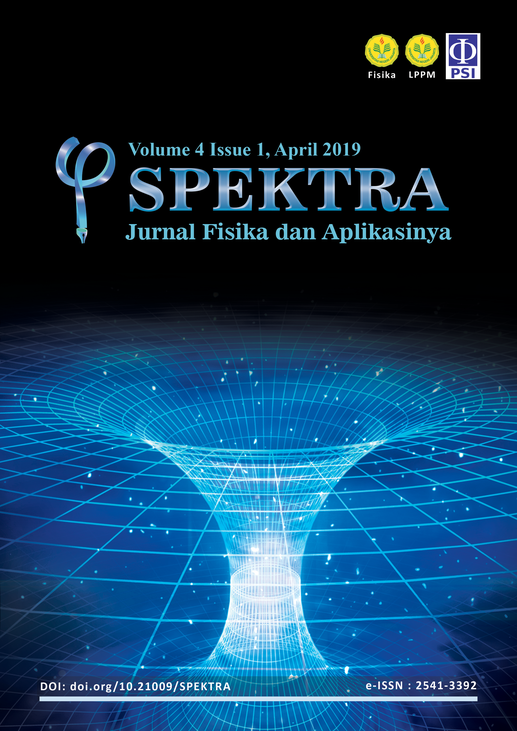HEATING AND QUENCHING PROCEDURE ON THE MAKING OF TRADITIONAL BLACKSMITH STEEL WITH HIGH QUALITY
DOI:
https://doi.org/10.21009/SPEKTRA.041.05Abstract
Blacksmith is a people's business that has been going on for a long time in Indonesia. Based on the experience that has been obtained from time to time and hereditary, the blacksmith industry has been done by the community to meet the needs of agricultural and household utensils. However, observe to this people's business, now it decreases with various causal factors, such as the ease of imported goods on the market with lower prices. Many creative efforts need to be carried out so that these people's businesses remain and increasingly develop, among others by improving the quality of the process of a blacksmith so that their products are quite competitive. This article describes the results of the research in the laboratory regarding the physical processes of heating and quenching under blacksmith, which the results have been applied to community service activities at the Suger Kidul villages in Jember Regency. The study aimed to find the most appropriate procedure for steel tool manufacturing processes so that the blacksmith products have high quality as high hardness. The physical process for blacksmith process is heating and quenching. This study analyzes the proper heat (temperature), proper processing time, and proper media for heating and quenching to produce good harness quality of the product.
References
[2] I. Sodikin, J. Waluyo, Y. Pratiwi, “Rancang Bangun Tungku Pemanas untuk Pande Besi yang Ramah Lingkungan Guna Meningkatkan Kapasitas Produksi Alat Pertanian,†2016.
[3] S. Darmanto, D. Purwadi, H. Hartono, M. Ridwan, “Revitalisasi Tungku Api Sederhana Untuk Pengerjaan dan Pembentukan Logam Di Industri Pande Besi,†Jurnal Abdimas, 22(1), 77-82, 2016.
[4] R. Rusadi, H. Hadimi, E. Karyadi, “Desain Dan Pembuatan Dapur/Tungku Pemanas Untuk Kerajinan Pandai Besi Untuk Meningkatkan Kualitas Produk,†ELKHA, 10(2), 68-72.
[5] R. A. Adebayo, P. K. Oke, “Development of a Forging Machine for Improved Blacksmithing in Nigeria,†Current Journal of Applied Science and Technology, 1-11, 2017.
[6] R. Adawiyah, M. Murdjani, A. Hendrawan, “Pengaruh Perbedaan Media Pendingin Terhadap Strukturmikro dan Kekerasan Pegas Daun Dalam Proses Hardening,†Jurnal Poros Teknik, 6(2), 96-102, 2014.
[7] A. Mersilia, “Pengaruh Heat Treatment Dengan Variasi Media Quenching Air Garam dan Oli Terhadap Struktur Mikro dan Nilai Kekerasan Baja Pegas Daun AISI 6135,†2016.
[8] D. Nurjayanti, E. Ginting, P. K. Karo, “Pengaruh Lama Pemanasan, Pendinginan secara Cepat, dan Tempering 600 C terhadap Sifat Ketangguhan pada Baja Pegas Daun AISI No. 9260,†Jurnal Teori dan Aplikasi Fisika, 1(2), 2013.
Downloads
Published
How to Cite
Issue
Section
License
SPEKTRA: Jurnal Fisika dan Aplikasinya allow the author(s) to hold the copyright without restrictions and allow the author(s) to retain publishing rights without restrictions. SPEKTRA: Jurnal Fisika dan Aplikasinya CC-BY or an equivalent license as the optimal license for the publication, distribution, use, and reuse of scholarly work. In developing strategy and setting priorities, SPEKTRA: Jurnal Fisika dan Aplikasinya recognize that free access is better than priced access, libre access is better than free access, and libre under CC-BY or the equivalent is better than libre under more restrictive open licenses. We should achieve what we can when we can. We should not delay achieving free in order to achieve libre, and we should not stop with free when we can achieve libre.
 SPEKTRA: Jurnal Fisika dan Aplikasinya is licensed under a Creative Commons Attribution 4.0 International License.
SPEKTRA: Jurnal Fisika dan Aplikasinya is licensed under a Creative Commons Attribution 4.0 International License.
You are free to:
Share - copy and redistribute the material in any medium or format
Adapt - remix, transform, and build upon the material for any purpose, even commercially.
The licensor cannot revoke these freedoms as long as you follow the license terms.

 E-ISSN 2541-3392
E-ISSN 2541-3392  Focus & Scope
Focus & Scope  Editorial Team
Editorial Team  Reviewer Team
Reviewer Team  Author Guidelines
Author Guidelines  Article Template
Article Template  Author Fee
Author Fee  Publication Ethics
Publication Ethics  Plagiarism Policy
Plagiarism Policy  Open Access Policy
Open Access Policy  Peer Review Process
Peer Review Process  Retraction & Correction
Retraction & Correction  Licensing & Copyright
Licensing & Copyright  Archiving & Repository
Archiving & Repository  Contact
Contact  Mendeley
Mendeley 

